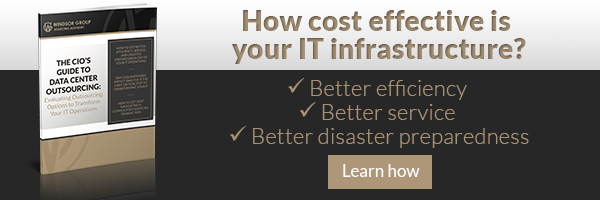 Selling a new IT infrastructure planning strategy within your organization isn’t really any different than selling your company’s products or services to outside markets. You can’t force potential customers to buy from you, and as much authority as you may have, you can’t force your employees to accept change.
Selling a new IT infrastructure planning strategy within your organization isn’t really any different than selling your company’s products or services to outside markets. You can’t force potential customers to buy from you, and as much authority as you may have, you can’t force your employees to accept change.
Without buy-in, your IT infrastructure planning strategy is doomed. Acceptance starts at the very top, in the C-suite. But change has to be perceived as “worth it” to everyone down the line in your organization, too, or some of your folks won’t embrace the new strategy.
Why are we doing this?
Global marketplace and economic environments are just too volatile for even the most entrepreneurial execs to make on-the-fly management decisions. On the other hand, strategic IT infrastructure planning assures you have the capacity and flexibility to be spontaneous when it counts – capturing unforeseen opportunities or even switching directions, if necessary, to make internal improvements or generate additional revenue.
Planning is essential to maintaining enterprise sustainability. But you have to sell the new strategy in order to get the performance results you want, expect and need to realize gains and grow your business.
Smart managers know that treating employees or departments as siloed groups is counter-productive. Conversely, people who can see the whole picture and understand their role in accomplishing corporate goals are far more willing to help achieve those goals. To successfully sell your new IT infrastructure planning strategy, you have to focus on the value proposition.
That includes considering how your plan will affect functions and people, but also issues such as governance and ongoing project planning and implementation.
Motivations differ.
Your top executives have one eye on the bottom line and one on the long-term vision for your enterprise. Line employees and maybe even your middle managers are most concerned with what’s in it for them. It’s important to remember that you’re dealing with people, at every level within your company. And because they’re people, they’re motivated by emotional as well as objective factors.
To work efficiently and achieve excellence requires everyone to be pulling in the same direction. That includes selling the strategy as well as implementing it. Ensuring everyone fully understands what’s in it for them will motivate them to be part of the solution. For them, that added value may be:
- A more interesting or enjoyable job.
- A more welcoming atmosphere for BYOD or remote working options.
- Enhanced communications with customers for sales and marketing.
- More time to strategize.
- More time for research and development and other creative thinking.
- Increased profitability.
- Happier investors, whether they’re stockholders or public citizens.
Failure is not acceptable.
It sets you back, which could push you to the competitive sidelines. It depresses everyone. And it wastes time, money and other precious resources. Following some simple steps can ensure your IT infrastructure planning strategy is seen as a “must-have” internally.
Build a solid business case for transformation, one that considers every angle and true total cost of ownership. Then explain the new planning strategy throughout your enterprise, to avoid confusion, worry or balkiness.
Ensure key leaders understand their “sales” role in promoting the new strategy, especially how they can lead and encourage their team members by teaching procedural changes and emphasizing their positive implications. Identify coaching and modeling behaviors that promote acceptance, including clear, ongoing communication throughout your enterprise.
Your new IT infrastructure planning strategy will benefit everyone in your organization, as long as it’s aligned with long-term corporate goals. And it will be an easy sale if you emphasize how the results will make your people’s work easier or better.
Photo credit: cali.org via Flickr


